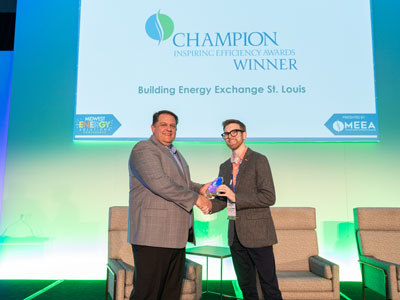
By Malachi Rein, Director of the Building Energy Exchange — St. Louis
Buildings might just be humanity’s greatest invention. They serve as our intersection with technology and our environment. Without them we could achieve very little. Filling our fundamental needs is the very reason that they are our constant companions and ironically why, like in any other relationship, we often take them for granted.
With the support of buildings we have developed full and busy lives. Thinking about them is secondary until something breaks in a gloriously expensive and stressful way. We could have done more maintenance right? Silent productivity and health impacts are incredibly costly. Even comfort, the lack of which is one of the stronger hooks for our attention, can be a project that we’ve been meaning to do for far too long.
No matter what you care about- costs, resilience, climate, community, economy, artistic expression, doing the right thing, reducing stress, moral or ethical concerns about gluttony, safety, the need to move the needle on buildings is unavoidable. Not just tomorrow’s buildings, these buildings. The ones that we have here now – the ones you are probably sitting in right now reading this article!
The Building Energy Awareness Ordinance passed in the City of St. Louis in 2017 and requires most buildings over 50,000 square feet to benchmark and report their energy and water use annually. Compliance rates have risen to around 90%. Clayton recently passed a similar ordinance for buildings over 100,000 square feet. This simple task opens many doors that we didn’t have the information to unlock before. For both individuals and the community, we can see how good our buildings actually are. We can choose better buildings and invest strategically to reduce waste.
Emphasizing quality allows us to take a path where the business of St. Louis is an investment in and for St. Louis. The alternative is a path where a project in St. Louis is an investment in and for someone else at our expense which reduces competitiveness and future viability of these spaces.
Even if your buildings aren’t required to benchmark, ENERGY STAR Portfolio Manager is a free tool that anyone can use. Join us for one of our upcoming trainings to learn more, register at www.be-exstl.org/calendar. After all, you can’t manage what you don’t measure.
Check out Malachi’s recent TEDx talk at Missouri S&T titled “Unveiling the Hidden Potential of Our Buildings” and be sure to join us on April 9th @ Cannon Design for a program with Missouri Gateway Green Building Council on “Moving the Needle on Building Performance in St. Louis.”


